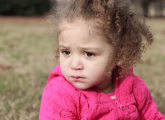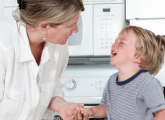TEY hears from Sue Asquith about supporting young children with emotional regulation and transitions…
I often describe self-regulation as something we need to understand in order to manage our own energies, emotions and behaviours.
We know that babies aren’t born with the ability to self-regulate, so parents or carers need to be able to feel for that child – to be there when baby is upset and find out what they need.
Do they need a nappy change? Could they be hungry? Are they thirsty? As long as we respond in a timely way, we help baby to feel regulated again and we ease that discomfort.
As children grow into toddlerhood, we support them in different ways. We might say things like, ‘I understand that’s really frustrating for you’ or ‘I can see that made you feel really cross’.
We can start to name those feelings so that hopefully when children build up their understanding and communication, they can recognise and express their emotions.
Supporting children’s emotional regulation involves helping them to understand what’s causing those feelings and behaviours, too. We need to know where our children are in their development and, wherever they are, meet them there. If children are experiencing difficulties processing sensory information such as interoception, they may need us to help them recognise, for example, when they’re too hot or need to rest or have a drink.
Try not to dismiss children’s feelings by saying things like, ‘it’s okay’. If we do this, they’re not going to learn what that feeling is and learn how to express themselves.
No one’s happy all the time – we all have ups and downs. Children need that affirmation – to know that their trusted adults can see and understand how they’re feeling, and that we can help them.
As they get older, we can offer more strategies to support children with their emotions. I used to talk about handing over the reins to self-regulation, but we just give them that little bit more length to try and work it out for themselves, as long as they know we’re still there to help.
Lots of early years settings read The Colour Monster by Anna Llenas, and many practitioners have come up with creative ideas and activities to use alongside the book.
I visited a setting recently where they used an empty water bottle to make a sensory shaker, filled with all the colours from The Colour Monster.
For a young child who doesn’t yet understand about their body, some emotions can feel huge and quite scary.
The sensory shaker was a really lovely visual to help young children see that the red colour swirls around and is really active, but in time calms back down again. And when they’re angry, they’ll feel all shaken up, but in time that feeling will settle down again.
I’ve seen a lot of really lovely practice out in the field and, perhaps because we’ve gone through Covid, there’s a big focus on PSED and spending more time on the important prime areas of learning before moving on.
There’s so much turmoil at the moment for young children. They’ve lived through Covid, and some children are hearing news stories about Ukraine and Russia. Some might have friends and family out there.
Young children may not understand whether the conflict will affect their daily lives. We try and shield children from what’s going on in the world, but they’re still going to hear things on the news and the radio.
When the ‘Beast from the East’ arrived a few years ago, young children who’d heard about it on the weather thought there was an actual beast coming.
They were scared because they’d taken it literally, so it’s really important that we know that children are listening – to help them understand what’s going on and talk through their emotions.
There’s been a lot in the media recently about school readiness, but if you think about all the transitions they’ve been through – all the stops and starts – maybe children need a little more than that short transition into school. We can’t just do what we’ve always done.
During times of change, the emotions of instability come into play. Pre-schoolers might be fine at their nursery, childminding setting or pre-school in the summer term, because that’s their comfort zone and they know what to expect. But then they’re faced with that first day in big school.
It’s not just about being physically ready for school; the lunches are different, the timetable for the day is different and expectations may be different as well.
When I worked on the Starting School Together project with PACEY, we took photographs of what the school looked like at lunchtime and the trays that children carry. We also took a video of the area where children hang their coats and bags.
Just choosing your lunch and carrying it to the table or knowing where to hang your bag is a big thing when you’re little! Showing children videos and pictures won’t take very long to do but means so much to them.
Sometimes you’ll read on social media that children aren’t fully toilet trained when they start school. But not every child is going to walk through the door in September and be fine. That’s not anything the early years settings haven’t done, it’s not anything the parents haven’t done; it’s a case of meeting the child’s individual needs.
Toileting skills are a huge thing for school readiness, but some children don’t feel the urge to go to the toilet, so if you’re not saying to them, ‘Do you want to try to go to the toilet?’ or ‘Do you want a little drink?’, they won’t stop and think about going to the toilet or stopping for a snack or drink because they’re not feeling that sensation within themselves.
We need to understand that starting school won’t look the same for all children, and schools can learn so much from the early years staff and parents who know those children so well.
I’d like to see nurseries, childminding settings and pre-schools working in partnership more – a genuine, non-judgemental two-way flow of communication between the Reception teacher and setting, working together to prepare the children as much as possible for starting school.
A longer transition period into school and partnership working could support children with tweaks in routines or expectations in Reception. They might be small changes and they might be temporary, but they could make a huge difference for that child and mean their whole experience of starting school is a little bit easier.
Sue Asquith is an early childhood consultant and author. Sue runs courses for early years practitioners, including preparing for Ofsted inspections. Visit earlyyearstrainingconsultant.co.uk

Social skills – How to help shy children develop them
Editors picks

Modelled behaviour – How to set the best example
Editors picks
